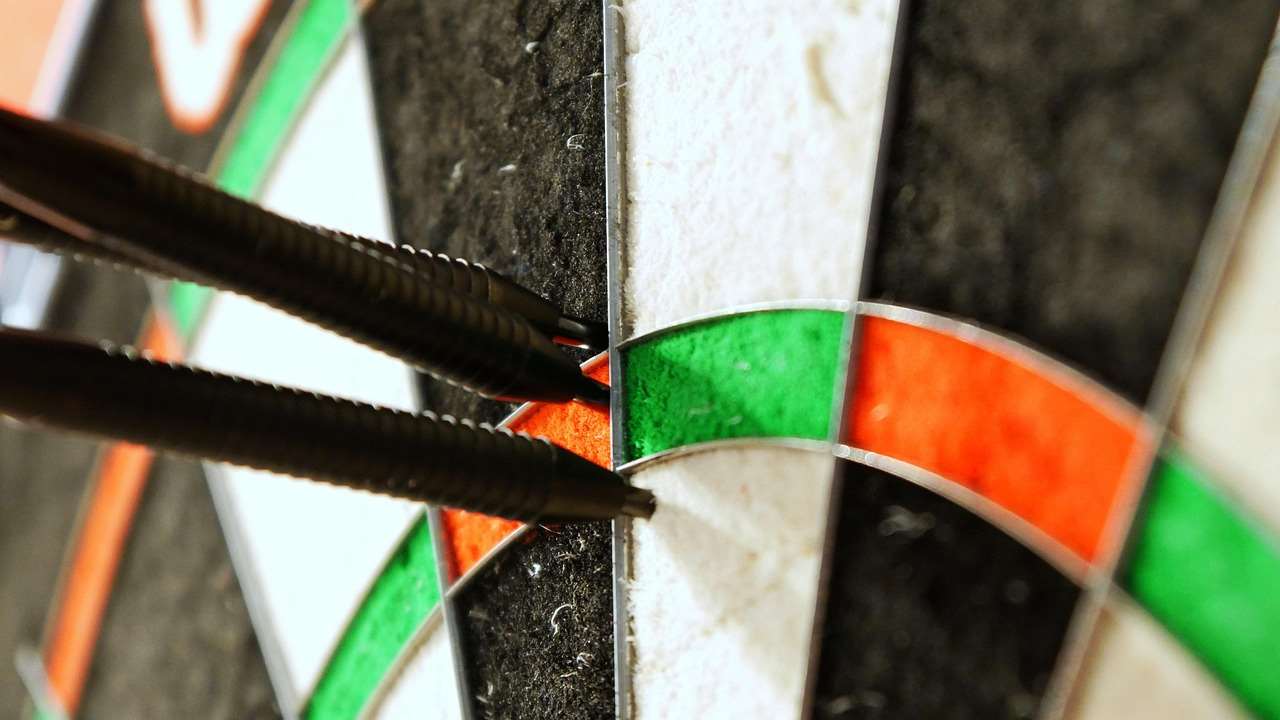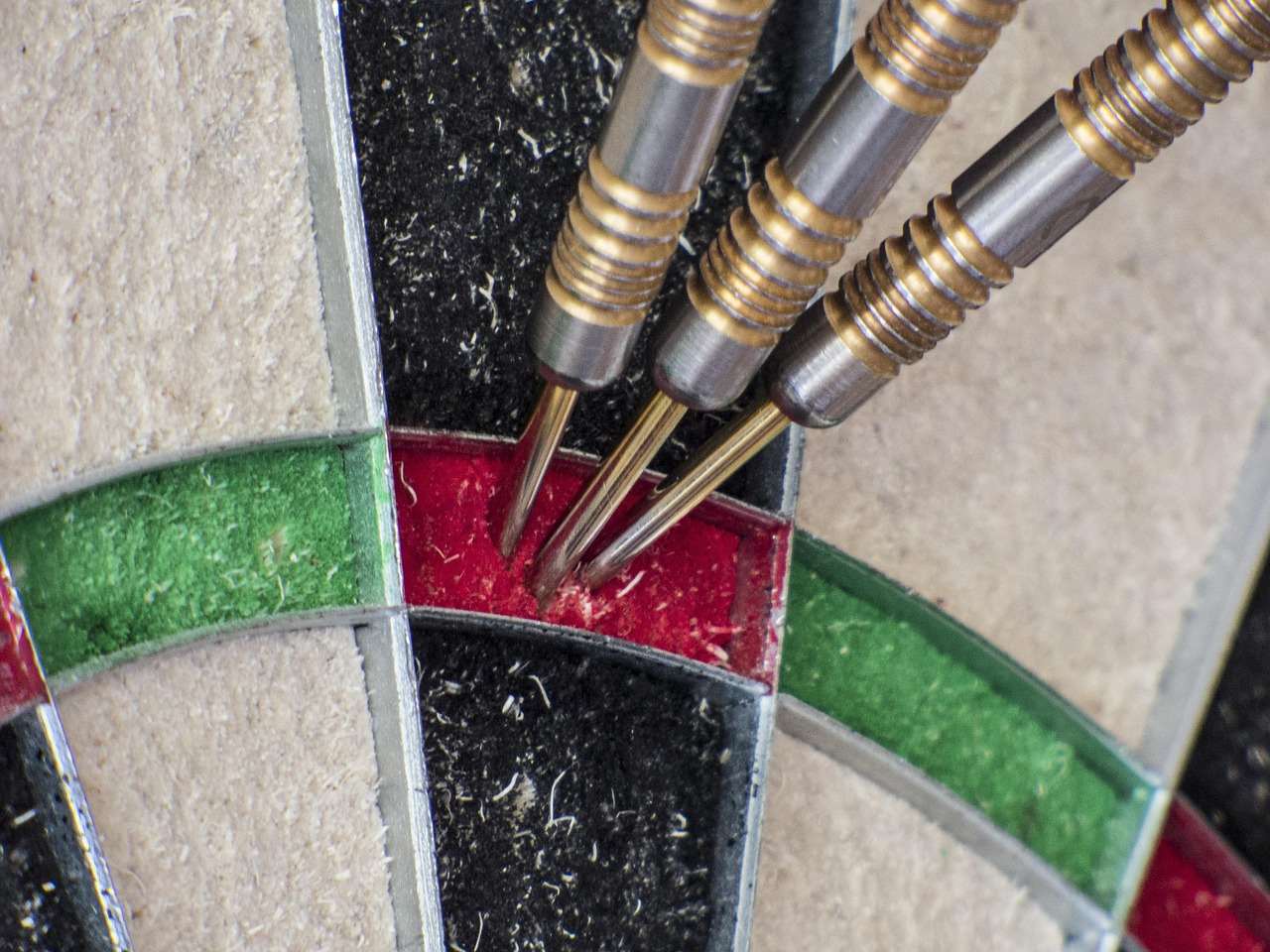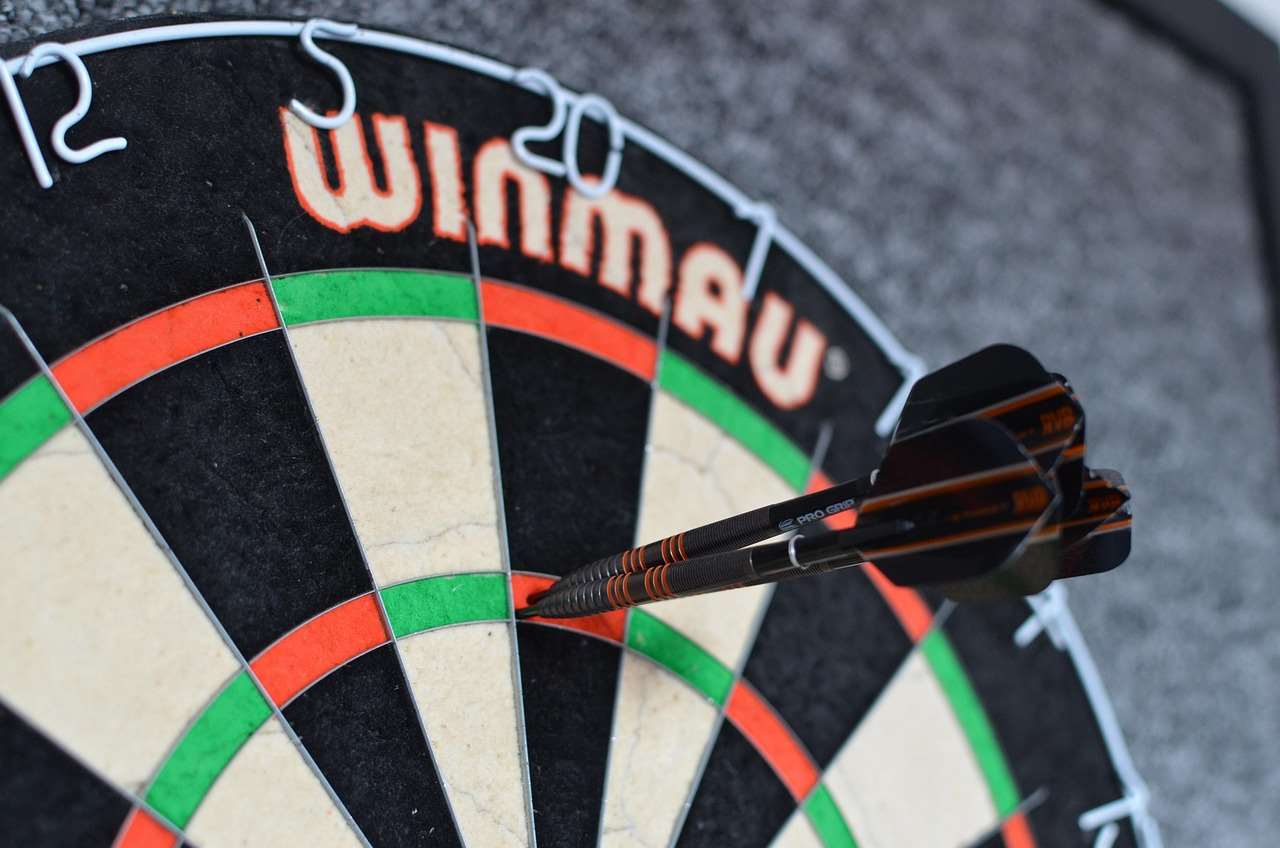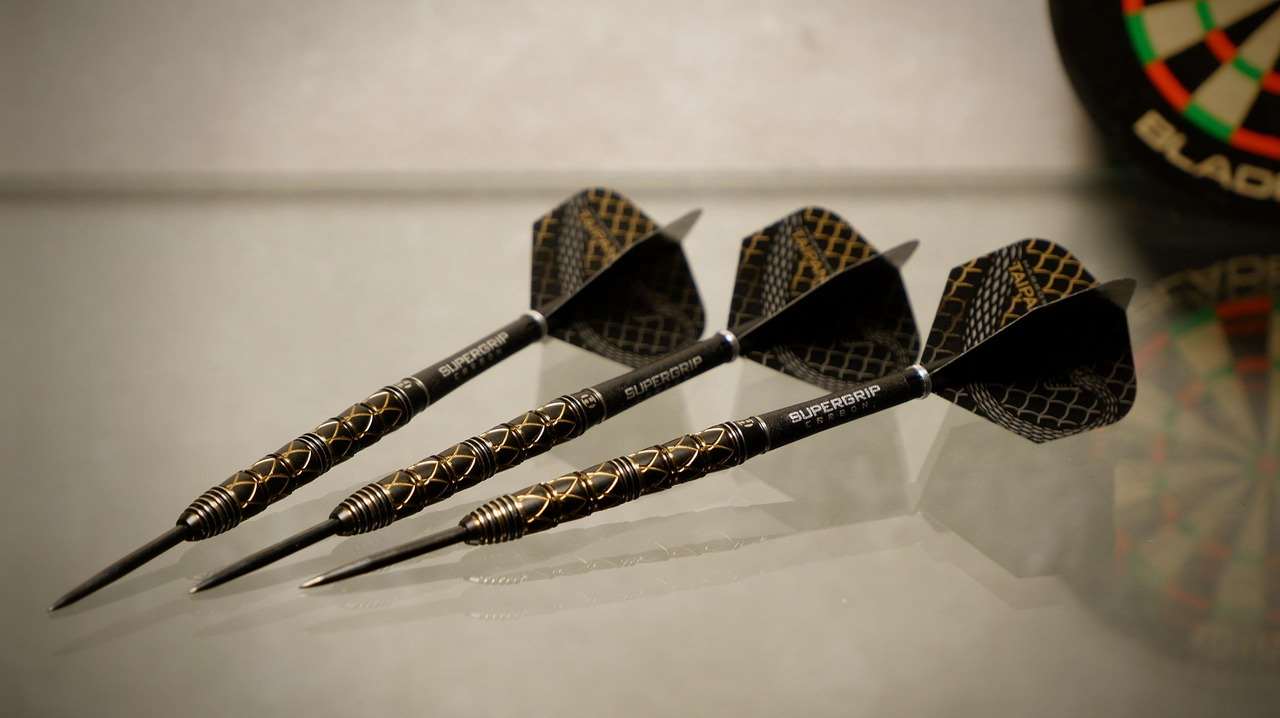Yes, the bullseye is indeed “in” in darts, meaning that hitting it counts towards your score and is a valid target. This article will explore everything related to the bullseye, its scoring value, different types of bullseyes, and strategies for mastering this crucial area of the dartboard.
⚠️ Still Using Pen & Paper (or a Chalkboard)?! ⚠️
Step into the future! The Dart Counter App handles all the scoring, suggests checkouts, and tracks your stats automatically. It's easier than you think!
Try the Smart Dart Counter App FREE!Ready for an upgrade? Click above!
What Is Bull in Darts and Why Does It Matter?
The term “is bull in darts” might seem unusual, but it simply addresses whether hitting the bullseye is a legitimate part of the game. It absolutely is! The bullseye is the central circle on a dartboard and is a high-value target. Understanding its importance and how to consistently hit it is paramount to improving your game. Mastering the bull requires practice and precision, transforming you from a casual player to a serious contender. Many games hinge on accurately hitting this target.

It’s not just about hitting the bull once in a while. Consistent accuracy targeting the bullseye will drastically improve your overall game. This consistency translates to faster game closures, more efficient scoring, and a higher level of confidence.
The Inner and Outer Bullseye Explained
The bullseye is actually comprised of two distinct sections: the inner bullseye (often called the “double bull” or “bullseye”) and the outer bullseye (often called the “single bull”).
- Inner Bullseye: This is the smaller, central red circle. In most standard games, it’s worth 50 points. Hitting the inner bullseye is often the preferred method to close out a leg.
- Outer Bullseye: This is the larger, green ring surrounding the inner bullseye. It’s worth 25 points. While not as valuable as the inner bull, it’s still a useful scoring zone, especially when building up your score or setting up doubles.
Knowing the difference between these two sections is crucial for strategic play. Sometimes aiming for the larger outer bull is strategically sound, especially if you are trying to avoid busting a score in how many darts to finish 301.
Scoring with the Bullseye
The bullseye’s point value makes it a strategic target. A 50-point score is significant, but its true value lies in its strategic implications within different game formats.
Standard 501 and 301 Games
In these popular formats, players start with a score of 501 or 301 and must reduce it to zero by throwing darts. The final dart must land on a double or the bullseye. The 50-point inner bullseye is a common way to “check out” or win the game. Understanding the App to score darts is essential for accurately tracking scores.
Cricket
In Cricket, the bullseye is one of the numbers you need to “close out” by hitting it three times. Each hit counts as one mark. The inner bullseye counts as two marks, allowing you to close it out with just two darts. Once you have closed out a number, you score points for any further hits on that number until your opponent also closes it out.
Variations and House Rules
While the 50 and 25 point values are standard, some house rules might alter these values, particularly in casual games. Always clarify the rules before starting a game to avoid any confusion or disagreements.
Techniques to Improve Your Bullseye Accuracy
Improving your bullseye accuracy requires a combination of proper technique, consistent practice, and mental focus. Here are some key areas to focus on:
Stance and Grip
A stable and balanced stance is fundamental. Experiment with different foot positions until you find one that feels comfortable and allows you to maintain balance throughout your throw. Your grip should be firm but relaxed. Avoid gripping the dart too tightly, as this can cause tension and affect your accuracy.
The Throwing Motion
Your throwing motion should be smooth and consistent. Use your arm as a pendulum, keeping your elbow relatively still. Follow through with your throw, pointing your fingers towards the target after releasing the dart. Consistency is key, so practice repeating the same motion every time.

Targeting and Aiming
Focus intently on the inner bullseye before each throw. Visualize the dart hitting the target. Some players find it helpful to use a specific aiming point on the bullseye as a reference. This is all about mental preparation and focusing on your goal.
Practice Drills for the Bull
Dedicated practice is the best way to improve your accuracy. Here are some effective drills:
- Bullseye Only: Throw all your darts at the bullseye. Track your progress and identify any patterns in your misses.
- Around the Bull: Start by aiming for the outer bullseye and gradually work your way towards the inner bullseye.
- Grouping Practice: Focus on throwing three darts as close together as possible, even if they don’t all hit the bullseye. This helps improve your consistency.
Regular practice, even for short periods, will yield significant improvements over time.
Equipment and Setup Considerations
Your equipment and dartboard setup can also impact your bullseye accuracy.
Dartboard Setup
Ensure your dartboard is hung at the correct height (5 feet 8 inches to the center of the bullseye) and distance (7 feet 9 1/4 inches from the oche to the face of the board). A properly installed board is crucial for fair and accurate play. Also, check the board’s condition; a worn-out board with loose wires can cause deflections. Consider the impact of the darts flight shaft on overall performance.
Dart Selection
Experiment with different dart weights, shapes, and materials to find what works best for you. A dart that feels comfortable and balanced in your hand will contribute to a more consistent throw. Consider the legend darts smooth for its streamlined design.

Lighting
Proper lighting is essential for clear visibility of the target. Ensure your dartboard is well-lit, with no shadows obscuring the bullseye. Good lighting reduces eye strain and allows you to focus better.
Mental Game and Pressure
The mental aspect of darts is just as important as the physical. Being able to handle pressure and maintain focus is crucial for consistent bullseye accuracy.
Dealing with Pressure
Learn to manage your nerves during crucial moments. Deep breathing exercises and visualization techniques can help you stay calm and focused. Remember, even the best players miss sometimes.
Maintaining Focus
Avoid distractions and concentrate on your target. Develop a pre-throw routine that helps you clear your mind and focus on the task at hand. Consistency in your routine fosters consistency in your throws.
Positive Self-Talk
Encourage yourself with positive thoughts. Believe in your ability to hit the bullseye. Positive self-talk can boost your confidence and improve your performance.

Advanced Bullseye Strategies
As you become more proficient, you can incorporate advanced strategies into your game.
Combination Finishes
Learn different combinations that involve the bullseye to finish games quickly and efficiently. For example, a score of 101 can be finished with a treble 17 and a bullseye.
Setting Up Doubles
Use the bullseye to set up doubles when you’re not in a position to check out directly. For example, hitting the bullseye can leave you with a manageable double for your next throw. This strategic play is essential for competitive matches like the us darts masters.
Defensive Strategies
Sometimes, hitting the bullseye can be a defensive move to prevent your opponent from checking out. Understanding when to prioritize defense over offense is a key element of advanced play. Consider also the circumstances surrounding removing dart point with alum if there are equipment issues mid-game.
Common Mistakes to Avoid
Even experienced players make mistakes. Being aware of these common pitfalls can help you avoid them and improve your game.
Gripping Too Tightly
A tight grip creates tension and reduces accuracy. Relax your grip and let the dart flow smoothly from your hand.
Rushing Your Throw
Take your time and focus on your target. Rushing your throw increases the likelihood of errors. Developing a consistent pre-throw routine can help prevent this.
Not Following Through
Failing to follow through with your throw can cause the dart to veer off course. Ensure you extend your arm fully towards the target after releasing the dart.

The Community and Culture of Darts
Darts is more than just a game; it’s a community. Participating in local leagues and tournaments can enhance your skills and connect you with other enthusiasts. Even if you are not aiming for darts score caller salary, being part of the darts culture is rewarding. You can even check darts doubles today to learn more about current events.
Joining a League
Joining a local darts league is a great way to improve your game and meet new people. Leagues offer a structured environment for competitive play and provide opportunities to learn from more experienced players.
Attending Tournaments
Attending darts tournaments, even as a spectator, can be an inspiring experience. You can watch professional players in action and learn from their techniques and strategies.
Online Communities
Online forums and social media groups dedicated to darts are excellent resources for information, tips, and support. You can connect with other players from around the world and share your experiences.
Conclusion: Mastering the Bullseye
In conclusion, understanding that **bull is in darts** is only the beginning. Mastering the bullseye is essential for success in darts. By focusing on proper technique, consistent practice, mental focus, and strategic play, you can significantly improve your accuracy and elevate your game. Embrace the journey, learn from your mistakes, and enjoy the process of becoming a more skilled and confident darts player. Now, pick up your darts and start practicing! Join a local darts league to enhance your skills and connect with fellow enthusiasts.
Hi, I’m Dieter, and I created Dartcounter (Dartcounterapp.com). My motivation wasn’t being a darts expert – quite the opposite! When I first started playing, I loved the game but found keeping accurate scores and tracking stats difficult and distracting.
I figured I couldn’t be the only one struggling with this. So, I decided to build a solution: an easy-to-use application that everyone, no matter their experience level, could use to manage scoring effortlessly.
My goal for Dartcounter was simple: let the app handle the numbers – the scoring, the averages, the stats, even checkout suggestions – so players could focus purely on their throw and enjoying the game. It began as a way to solve my own beginner’s problem, and I’m thrilled it has grown into a helpful tool for the wider darts community.